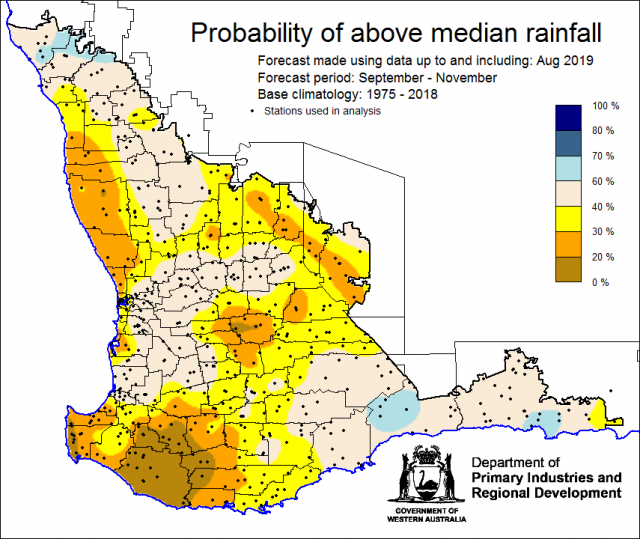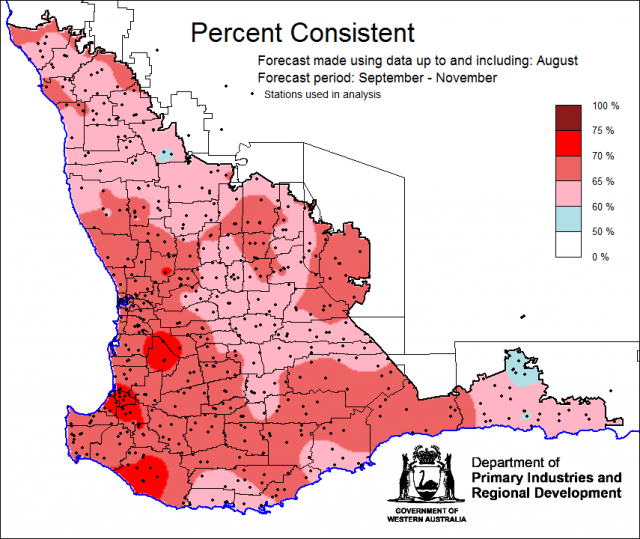Summary
The Department of Primary Industries and Regional Development’s (DPIRD) Statistical Seasonal Forecast (SSF) outlook for spring, September to November 2019 is indicating less than a 40% chance of exceeding median rainfall for the majority of the South West land Division (SWLD).
- For spring, September to November 2019, the SSF is indicating less than a 40% chance of exceeding median rainfall for parts of the Central West, Central Wheatbelt, Lower West and Great Southern Districts. Neutral (40-60%) chances, elsewhere. The most probable decile range is decile 2-3 for parts of the Central West, Central Wheatbelt, Lower West and Great Southern Districts and decile 4-7 for elsewhere. Predictive skill based on August conditions is poor to good (50 -75% consistent).
- The Bureau of Meteorology’s current seasonal outlook is indicating 25-50% chance of exceeding median rainfall for spring, September to November 2019, for the South West Land Division. Eastern parts have much lower chances of exceeding median rain. For the individual month of September, chances have increased to 50 to 70%. Predictive skill is moderate to good (55-75% consistent).
- Temperature outlooks for spring, September to November 2019, from the Bureau indicate a 55-80% chance of above average day-time maxima for the SWLD. Skill is poor to good at 55-100% consistent. Minimum temperature outlooks indicate a 55-75% chance of above average night-time minima for the SWLD, with skill poor to good 50-75% consistent.
- August rainfall, when compared with historical 1975-2018 rainfall, was average to above average.August maximum temperatures were very much above average and minimum temperatures were average.
- A positive Indian Ocean Dipole (IOD) remains the main driver of Australia’s climate over the coming months. A positive IOD is typically associated with below average rainfall and warmer than average days for large parts of southern and central Australia. With cloud-free days and nights expected, there is an increase of frost in susceptible areas.
Three Month Outlook for the south-west of Western Australia
Statistical Seasonal Forecasting (SSF)
DPIRD’s Statistical Seasonal Forecast (SSF) system uses historical relationships between global sea surface temperature and sea level pressure with rainfall in south-west Australia to produce forecasts of rainfall for the coming months. Users can click on any station indicated on the map for location-specific forecast information from the Seasonal Climate Information web page.
For spring, September to November 2019, the SSF is indicating less than a 40% chance of exceeding median rainfall for parts of the Central West, Central Wheatbelt, Lower West and Great Southern Districts. Neutral (40-60%) chances, elsewhere. The most probable decile range is decile 2-3 parts of the Central West, Central Wheatbelt, Lower West and Great Southern Districts and decile 4-7 for elsewhere. Predictive skill based on August conditions is poor to good (50 -75% consistent).


